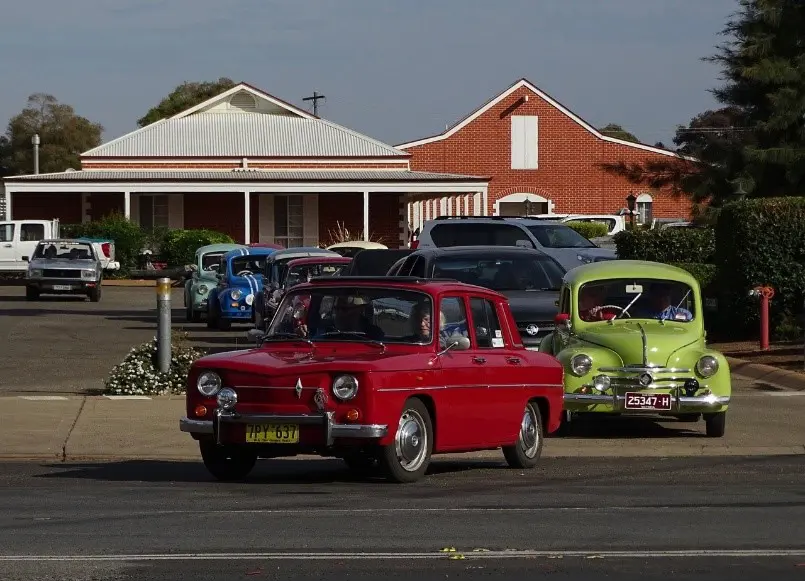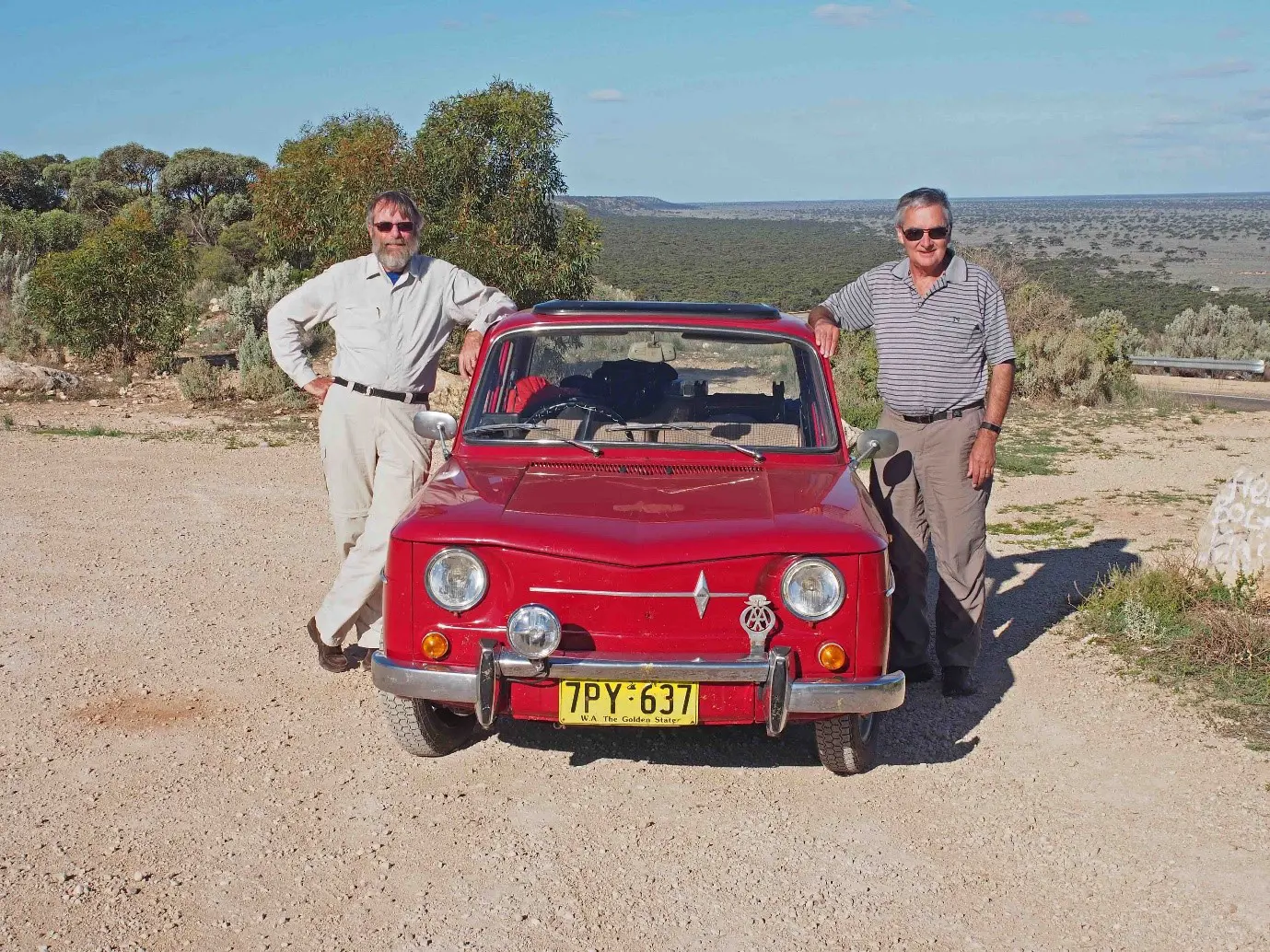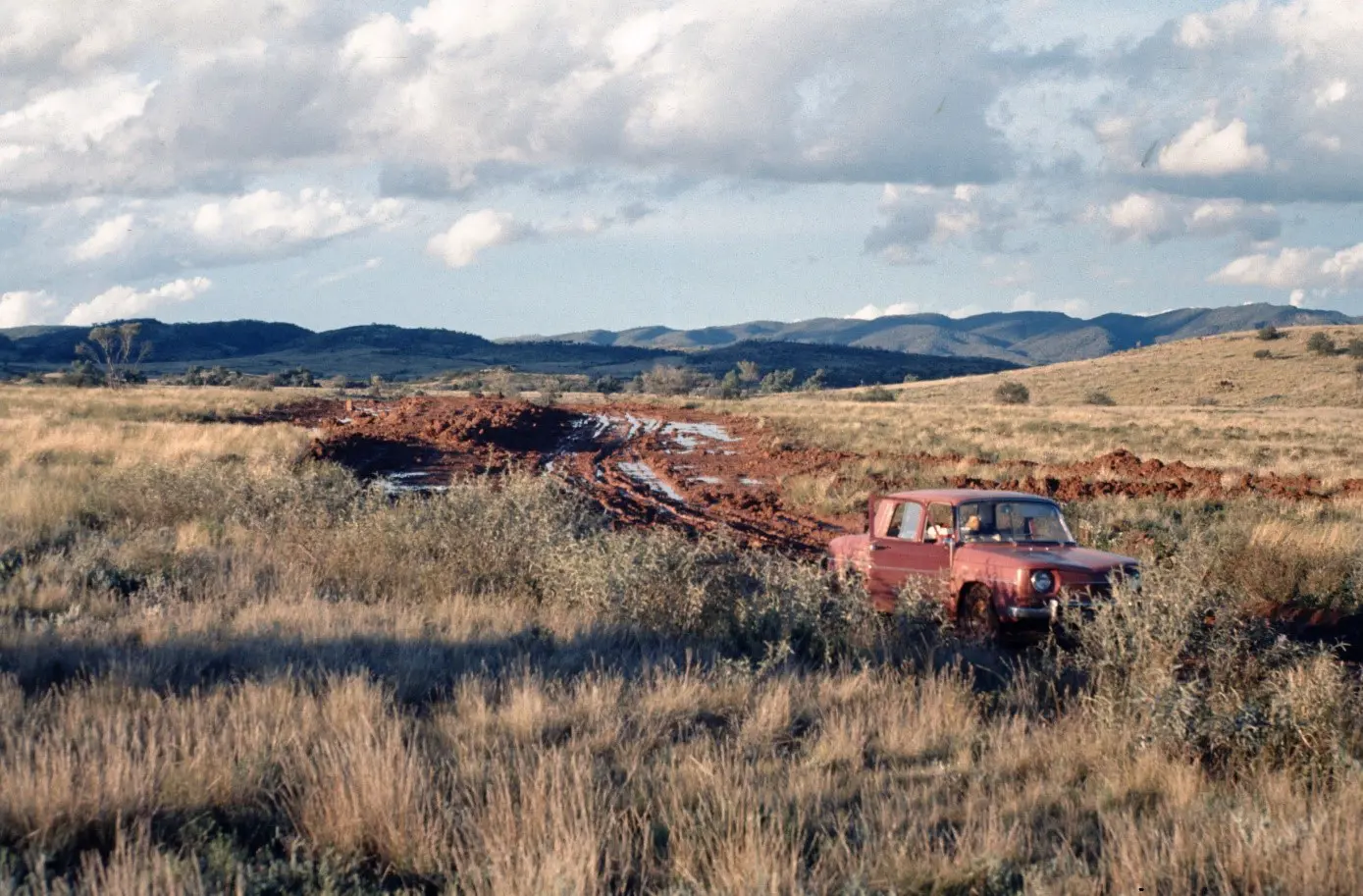MEET THE OWNER: JOHN WATERHOUSE AND HIS RENAULT R8
21 October 2021
In 1973, John Waterhouse, the National Coordinator of the Renault 4CV Register of Australia, acquired a Trinidad Rouge 956 cc, one owner R8 with his wife, Alex. Thirty-three years later, he embarked on a journey from Perth to Cowra in New South Wales. It was an epic journey, but as he told Classic & Sports Car in 2008, “In 320,000kms, it has never failed to get us home under its own steam”. Since then, the car has twice more travelled to NSW to the biennial ‘Musters’ of the 4CV Register, and the odometer now displays over 360,000 km. “Still reliable and regularly used in 2021, its reputation is maintained!”.
John’s Renault is locally made, for Australian built products of La Regie have a long history. In August 1948, the motor trader Ira L & AC Berk established a factory in the suburb of Belmore in New South Wales to assemble the 4CV ‘760’. Locally built Frégates and Dauphines followed this, and in 1959, all regional operations were consolidated as ‘Renault (Australia) Pty Ltd.’

Seven years later, the concern bought the assembly facilities of the Melbourne based Continental & General Distributors. At that time, motorists were offered the R4, the R10, the Caravelle 1100 and the Estafette. Unusually Renault (Australia) also became the concessionaire for Peugeot, with the plants continuing to assemble the 404.
Over the next fifteen years, the works made the 12, the 16, the 18, the 20TS (and the Peugeot 504) and gained a contract to build the Ford Cortina TE Mk. IV Station Wagon. Closure took place in July of 1981. As for the R8, the 27th March 1963 saw it unveiled to the Australian press. As a further sign that the early ‘sixties was another world, the organisers arranged a post-lunch motoring gymkhana. The winner was one Lance Lowe of the Australian Motor Manual, whose prize was a bottle of wine plus a ‘Renault scarf’ for his wife

The R8 proved a popular vehicle in Australia, rivalling the locally made products of BMC and Volkswagen. Your friendly local Renault dealer would tell you that the domestic content was forty per cent. Fifty-eight years ago, Wheels magazine voted it their first Car of The Year, beating the Volkswagen Type 3 1500, the Ford Consul Cortina and the Peugeot 404, stating it won:
Because of many things; because it is the first light car to use all wheel disc brakes, because of its extremely imaginative engineering and brisk performance, and because of its fine passenger seating.
Naturally, Renault celebrated this significant achievement, suggesting that the R8 might be ‘your dream car’ for a mere £A998. Assembly continued until 1966 when the R10 succeeded it. It should also be remembered that the Wheels ‘Car of the Year’ is now the world’s oldest annual award.
Mr. Waterhouse observes that the R8 is slow and susceptible to crosswinds by modern standards, but it is a very pleasant machine on the right road and at the right pace. The engine appears indestructible, the brakes are efficient, the ride is supple, and the four-speed gearbox is easy to use.
The R8 in its element – 600 km north of Adelaide in the Flinders Ranges in 1974:

Above all, the R8 is indeed a ‘World Car’, being made in Algeria, Bulgaria, Canada, Laos, Mexico, Morocco, New Zealand, Romania, Spain and Venezuela, and France. And –a crucial tip for readers contemplating such a trip – according to John, the Cibie headlamps are excellent under normal circumstances but do not repel wombats, kangaroos, and emus on the Nullabor Plain…
With Thanks To: John Waterhouse (See more)
Why choose Lancaster Insurance?
Here at Lancaster, we love classic cars as much as you do and we understand what it takes to protect them for future generations.
We have links with some of the top classic car clubs around the country and some of our policies even offer discounts of up to 25% for club members.
Other benefits of classic car insurance through Lancaster can include:
- Historic rally cover
- Static show cover
- Limited mileage discounts
- Choice of repairer
- 24-hour claims helpline
Give your classic the protection it deserves and get a quote for your classic vehicle today.
